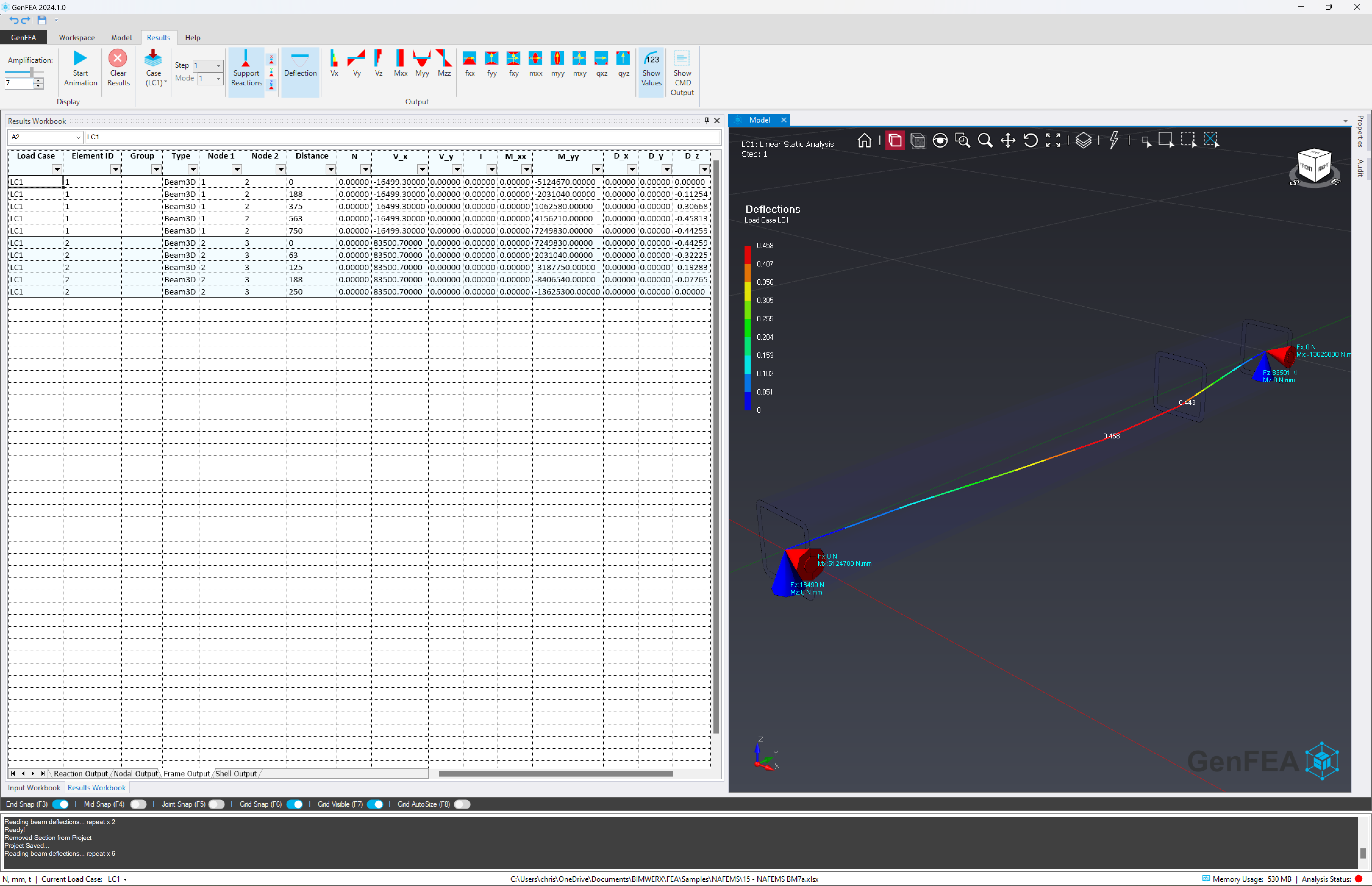
Below is a collection of benchmarks against known problems and validated results compared against GenFEA.
We have taken applicable NAFEMS Benchmark Challenges as it relates to GenFEA components and analysis types.
We have also provided some manual calculated problems and compared them with GenFEA outputs.
Modelling Beam Members with Finite Elements:
The NAFEMS Benchmark Challenge Number 7 is designed to explore the effectiveness of different finite element formulations in modeling beam members.
Specifically, the challenge compares the Euler-Bernoulli beam theory against the Timoshenko beam theory, highlighting the differences in assumptions and results between these two approaches.
The Euler-Bernoulli model, based on classical beam theory, assumes that plane sections remain plane and normal to the beam's neutral axis after deformation, leading to deflections that are typically modeled linearly. In contrast, the Timoshenko beam theory accounts for shear deformation and rotational effects, allowing for quadratic deflection profiles, which tend to provide more accurate predictions in scenarios where beam thickness cannot be neglected.
The conclusion drawn from this challenge underscores the superiority of the Timoshenko model for more accurately predicting the behavior of beams, especially in practical engineering applications where the effects of shear deformation are non-negligible.
This benchmark challenge serves to remind engineers of the critical need to choose the appropriate beam theory based on the specific requirements and accuracy needs of their projects.
From these results we can see that GenFEA is within 1% variation compared to NAFEMS published values for forces and moments, while deflection is slightly higher (more conservative) than that of NAFEMS, at 1.81%
Leave us a message and we will get back to you:
